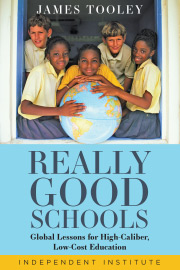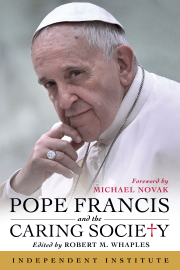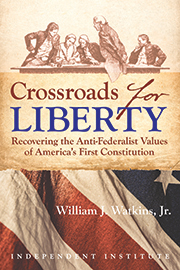Does Wall Street Have a Death Wish?
After several days of violent fluctuations, the world’s stock markets registered a massive increase in share prices on Thursday afternoon and on Friday, September 18 and 19, 2008. Why? As the Associated Press put it, “investors stormed back into the market, relieved that the government plans to restore calm to the financial system by rescuing banks from billions of dollars in bad debt. The Dow Jones industrials rose about 365 points, giving them a massive gain of about 775 over two days.”
Other stock markets also rose tremendously: on Friday the S&P 500 closed up more than 49 points, or about 4 percent; the Nasdaq closed up almost 75 points, or 3.4 percent.
Exactly what the government will do remains to be determined. Officials from the Treasury and the Fed and members of Congress intend to spend the weekend hammering out the details. Be afraid, be very afraid.
The impending measures come close on the heels of a series of wrong-headed actions undertaken by the government, including the bailout/takeover of Fannie, Freddie, and AIG; massive injections of new credit by the Fed and other major central banks; and the SEC’s prohibition of short-selling for almost 800 financial-company stocks. If, as anticipated, the Treasury moves next to assume the rotten paper currently being held by banks and other lenders (presumably mortgages and related securities, for the most part), then it is fair to conclude that the government has given up entirely on the free market and has decided to occupy the wasteland where outright socialism and economic fascism meet.
Of course, everyone engaged in this hysterical flailing will assert that the objective is only to save capitalism in a crisis. Such government saviors always make that claim, oblivious to its absurdity. Franklin D. Roosevelt and his gang claimed to be saving capitalism, too, but look at what was left of it when they had finished their work.
As economic historians witness the current machinations, they cannot help but recall the eerily similar events of August 13-15, 1971, another ill-fated weekend. At Camp David, President Richard M. Nixon huddled with his top economic advisers in an atmosphere of crisis and hastily crafted an extraordinarily inauspicious package of policy actions. As described in the 1972 Council of Economic Advisers Report, “The United States suspended the convertibility of the dollar into gold or other reserve assets, for the first time since 1934. It imposed a temporary surcharge, generally at the rate of 10 percent, on dutiable imports. Prices, wages, and rents were frozen for 90 days, to be followed by a more flexible and durable—but still temporary—system of mandatory controls.”
Herbert Stein, Nixon’s chairman of the Council of Economic Advisers, later recalled: “Even after 25 years I am amazed by how little we looked ahead during that exciting weekend at Camp David, when we (the president, really) made those big decisions.” Everybody seems to have assumed without discussion that after a 90-day wage-and-price freeze, the government would somehow ease back to a regime of free, flexible prices. However, “[a]s it turned out, we were in the price and wage control business not for 90 days but for nearly 1,000. [Moreover,] [w]e were in the business of controlling energy prices for much longer.”
Likewise, the emergency policies the government is currently concocting will certainly have extensive ramifications, many of them unanticipated, for years to come. The encouragement to moral hazard now being given to financial institutions promises to make them more reckless than the biggest plunger in Las Vegas. After all, any profit will go into their pockets, but any big losses, they will reasonably expect, will be sloughed off onto the taxpayers. Yes, indeed, that image shimmering on the horizon is Casino Capitalism. Henry Paulson, Ben Bernanke, and the rest of these statist saviors are making a mighty contribution to this country’s economic ruin.
Notice, however, that the investors love every bit of it, just as they did after Nixon audaciously displaced the broadcast of Bonanza to announce his New Economic Policy to the nation on Sunday evening, August 15, 1971. The people loved it, even those with money at stake. As Stein observed, “[t]he Dow-Jones Average rose 32.9 points on Monday after the President’s announcement—the biggest one-day increase up to that point.” Here then are two dates matched in history: August 16, 1971, and September 19, 2008. On those days, investors demonstrated that they were willing to sell the soul of capitalism for a shabby promise of temporary government salvation. What Stein wrote about the 1971 episode in his book Presidential Economics might with equal validity be written about today’s events: “This reaction is important to the history of economic policy in America. It shows how shallow was the general support in principle for the basic characteristics of a free market economy.”
How shallow it was; how shallow it remains. The question is, How many times can the government race its emergency bailout vehicle toward the cliff without dragging the entire economy irretrievably into the abyss of outright socialism or full-fledged, Mussolini-style economic fascism?













